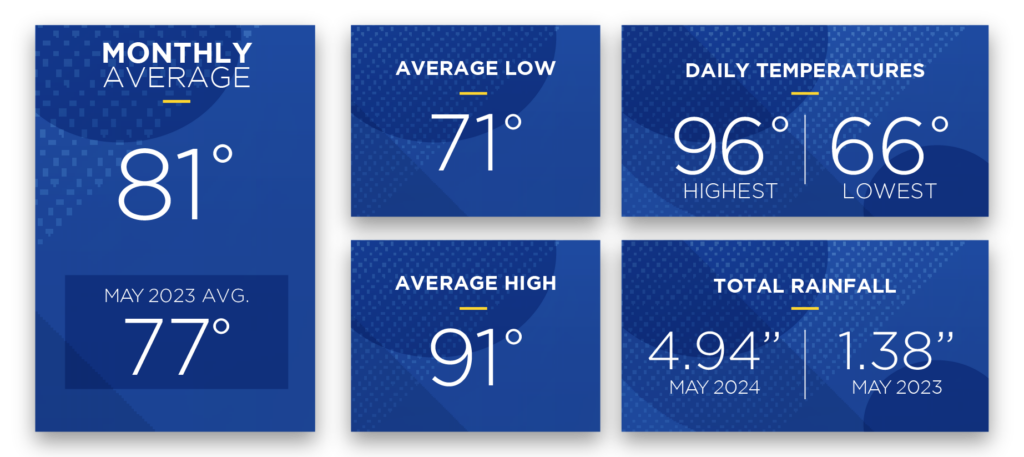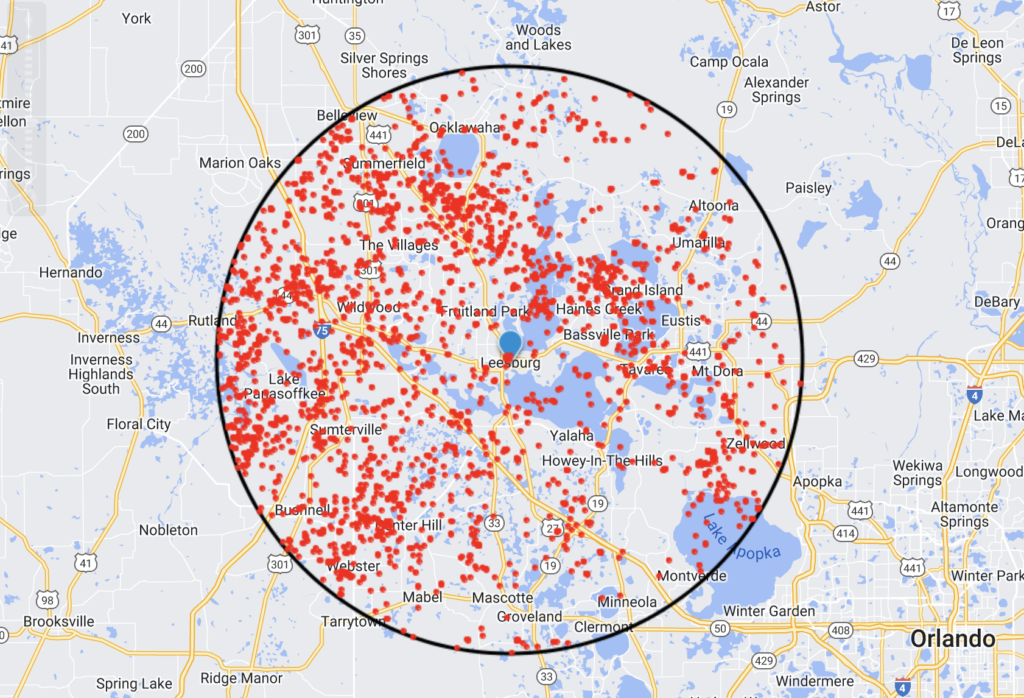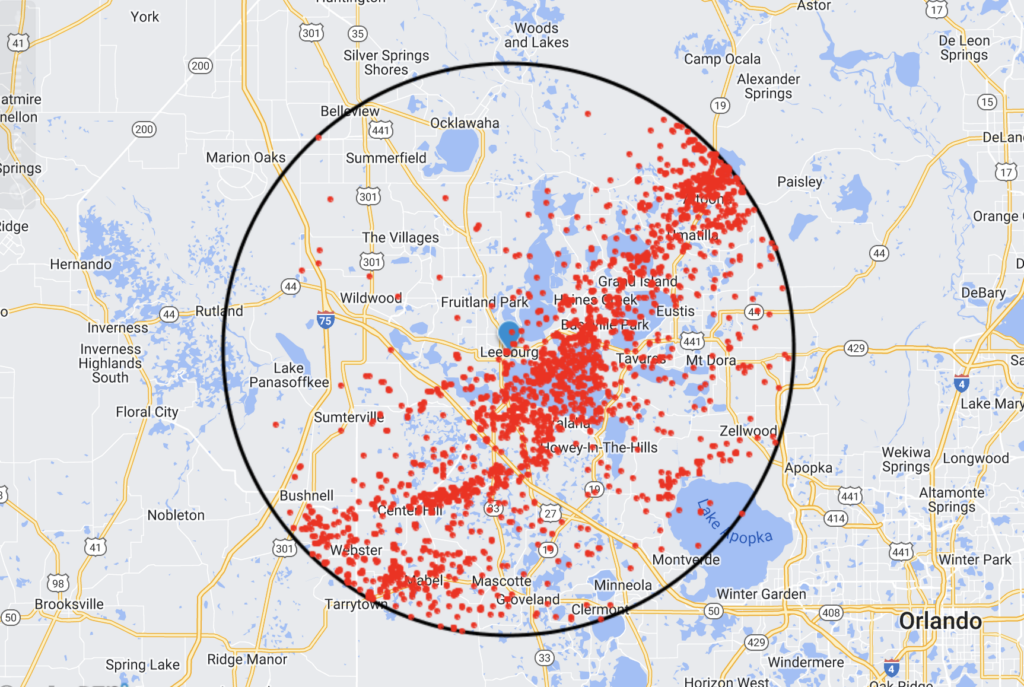May 2024 Sunshine State Stats
In May 2024, the average high and low temperatures rose 9 degrees from last month while rainfall and thunderstorm activity increased substantially across Central Florida. The month’s average high temperature was 91 degrees, and the average low was 71 degrees, measurements that were 3 and 2 degrees higher, respectively, than the “normal” averages as recorded at Leesburg International Airport (KLEE). The month’s highest temperature reached 96 degrees on the 29th and the lowest temperature was recorded on the 1st and 21st, when the mercury fell to 66 degrees.

Reported rainfall in May totaled 4.94 inches, .81 inch higher than “normal,” and a significant increase from the 1.88-inch total of April. Measurable rainfall occurred on just 8 days, between May 11 and 20; the rainiest day was May 18, when 1.58 inches fell.
Thunderstorm activity within a 20-mile radius of Leesburg International Airport increased substantially. WeatherSentry detected 6,191 cloud-to-ground strikes in May, versus 602 in April. May 11, 14, and 18 were the most active lightning strike days recorded in the month.
Lightning Archive Report – 20-mile radius from Leesburg International Airport (KLEE)
Data and charts provided by weathersentry.dtn.com

Cloud to Ground Lightning – May 1-15, 2024 (3176 strikes)

Cloud to Ground Lightning – May 16-31, 2024 (3015 strikes)
Florida residents know that thunderstorm activity will maintain a steady presence in Central Florida’s summer weather, and SECO Energy reminds members to take shelter quickly if a thunderstorm approaches. Stay connected to SECO’s StormCenter for updates on outages and restoration progress. SECO offers a meter-based surge arrester designed to protect large appliances (motors and compressors) by reducing surges at the meter BEFORE they enter the home. Members can lease or purchase the Surge MitiGator surge protection program by filling out a contact form.
HVAC is the largest energy user in Central Florida homes, accounting for an average of 35 to 40% of kWh usage. As daytime temperatures rise into the 90s, many households may notice an increase in energy costs. Be sure to check your thermostat settings to properly update them for these warmer months. The energy-efficient thermostat setting during hotter months is 78 degrees.
June forecast from The Old Farmer’s Almanac:
The Old Farmer’s Almanac weather outlook for June 2024 predicts mild temperatures with isolated thunderstorms in the first eleven days, followed by a week of sunny and warm conditions. The period between June 19 and 30 is projected to bring hot conditions with scattered thunderstorms toward the end of the month. The estimated average temperature for June is 83 degrees, and the expected rainfall is 4 inches, which is much less than the average for June.
Online Energy-Efficiency Tools
Log into SmartHub to view past bills and consumption charts to check historical usage. If you want help in reducing your energy usage, SECO offers several energy-efficiency tools to help you identify energy wasters. Take the Home Energy Assessment to receive a detailed email tailored to your home’s features and lifestyle. The energy-saving advice will provide low-cost ways to decrease your usage – and your electric bill.
To easily calculate how much energy your appliances, lighting, electronic devices, and other energy-using items in your home consume, use the Energy Estimator.





